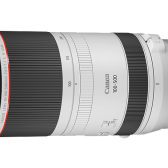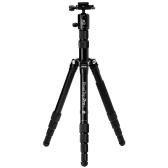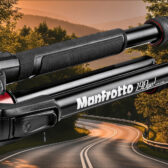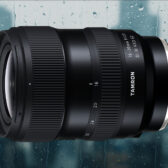Angelbird has launched new CFexpress Type B SE and SX memory cards, with larger capacities and improved speed and performance.
Angelbird AV Pro CFexpress B SX

The AV PRO CFexpress B SX memory card is specifically designed to meet the demands of professional photographers and videographers shooting in up to 12K+ RAW.
An uninterrupted sustained write speed of 1480 MB/s supports non-stop, buffer-free burst photography with the right balance of storage capacity and speed for advanced photography.
The combination of ultra-high speed and the right capacities make this card ideal for professional photographers. Capture detailed stills and continuous mode photography of action sports, wildlife, fashion, news reporting, vlog posts, and video clips in up to 12K+ RAW.
These cards come in 160GB and 330GB capacities and are priced at $129 USD/EUR for the 160GB card and $299 USD/EUR for the 330GB card. Euro prices exclude the 21% VAT.
Preorder from Adorama (Release is expect soon)
Angelbird AV PRO CFEXPRESS B SE

Angelbird’s AV PRO CFexpress B SE cards support next-level RAW video and photo production with versatile capacities and uninterrupted Stable Stream™ high-speed performance.
The 512 GB card captures a wide variety of photo and video projects in up to 8K RAW with a sustained write speed of 800 MB/s maintained throughout the entire recording session.
The 1 TB card option sustains a blazing-fast sustained write speed of 1300 MB/s, capable of capturing high-definition video and images in up to 12K+ RAW.
Both capacities are well-positioned transitional media for professionals and next-gen creators looking to upgrade to CFexpress Type B technology.
These cards come in 512GB and 1TB capacities and are priced at $129 USD/EUR for the 512GB card and $299 USD/EUR for the 1TB card. Euro prices exclude the 21% VAT.
ANGELBIRD’S STABLE STREAM™
SUSTAINED WRITE PERFORMANCE
Demanding formats such as 8K+ RAW recording or continuous shot photography place a heavy data burden for most camera systems.
Capturing detailed, high-definition frames requires a sustained write speed that does not throttle or drop off in performance as the capacity of the card gets used.
Angelbird Stable Stream™ technology supports the powerful sustained write speeds ensuring that a steady speed range is maintained throughout the duration of each shooting session for the entire capacity of the card.

FIRMWARE UPDATES VIA ANGELBIRD CFEXPRESS B CARD READER
To maintain optimal camera compatibility, performance, and full feature set of the Angelbird AV PRO CFexpress Type B cards, use the Firmware Update Tool accesssible exclusively via an Angelbird CFexpress B Card Reader.
While the AV PRO CFexpress B cards are compatible with other card readers available on the market, the ability to perform firmware updates is limited to the communication synergy between Angelbird cards and Angelbird readers.
Preorder from Adorama (Release is expect soon)
|
When you purchase through links on our site, we may earn an affiliate commission. Here's how it works. |












If you really fill a 1 TB card, that means you also need at least 3 TB of storage for those files and at least two backups. We might sooner or later need storage solutions with hundreds of Terabytes. Even the files of my Insta360 camera are about 1 GB per minute. That forces me to delete the original files once I have converted them.
I'm now looking at having the R5 record video instead of stills and a 128G is looking mighty small. This is mainly due to Canon limiting the ways you can configure the shutter button in movie mode. For capturing it only supports "start+stop recording", while I'd like the following options:
1) Record only when it's fully pressed, the IR trigger will hold it down for the duration of motion, plus 5 seconds
2) Only start recording when pressing the shutter, don't stop. If the trigger sees movement, it will start the recording, but if it detects another movement while the camera is still recording, it will actually stop the recording.
Unlimited recording times would also get around that, but then I'd need an automated process to remove the non-interesting bits from the 10 hours of footage each night :) I've very, very jealous of the Nikon Z 9 'autocapture' mode they added in the most recent firmware. With that and a big USB-C power bank I wouldn't even need the triggers!
An example from last week, the R5 had trouble focussing, so I could stack 4 frames to get slightly more DoF :)
BTW when I travel for photography I often have several hundreds of GB of RAW (last 2 trips very close to 1TB each), and I know people saying they prefer smaller cards so they loose less if the card has a problem, I prefer a very big card to not have to change it every time and not having to worry about the free space ; I may be lucky I never had a card issue (I make a copy on computer in case sh*t happens )
Angerlbird makes a great card, but their firmware updates and potential compatibility issues with some cameras is sort of strange, seeing that the likes of SanDisk, ProGrade, Lexar, Delkin, and other top manufactures don't have this issue.
on the card are the maximum the cards can do. But sustained writes (e.g. video, holding down the shutter a long time at 20/30/40fps) are way below that. With the new SE cards this article talks about, the 512GB drops down to 800Mbyte/s quickly, the 1TB keeps going at 1300+ Mbyte/s.
@[email protected] will know the exact numbers, but I think the R5 itself tops out at 400-ish Mbyte/s, regardless of card.
The Z9's 8.3K/60 raw requires about 750MB/s write speed. Still well within the faster CFe Type B card capabilities.
Can't see a lot of long form video at 60fps though.
If the cards are using a non-standard way for firmware updates, we're out of luck and need to shell out the €110 for the reader or send the card to Angelbird for flashing.
Slightly related: you can install linux on your hard drives controller if you're bored: http://spritesmods.com/?art=hddhack&page=1